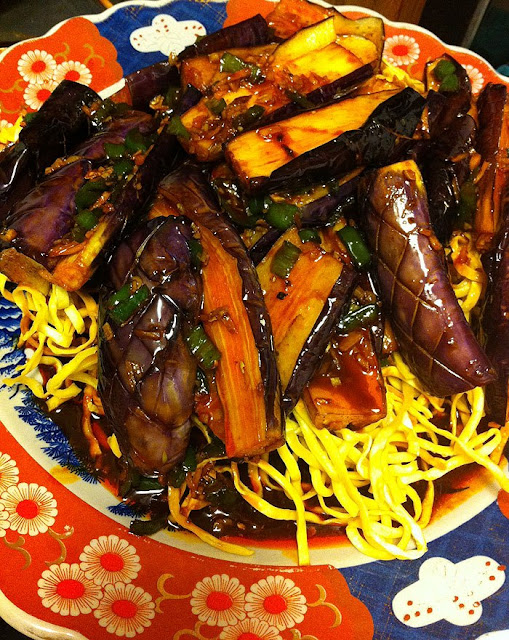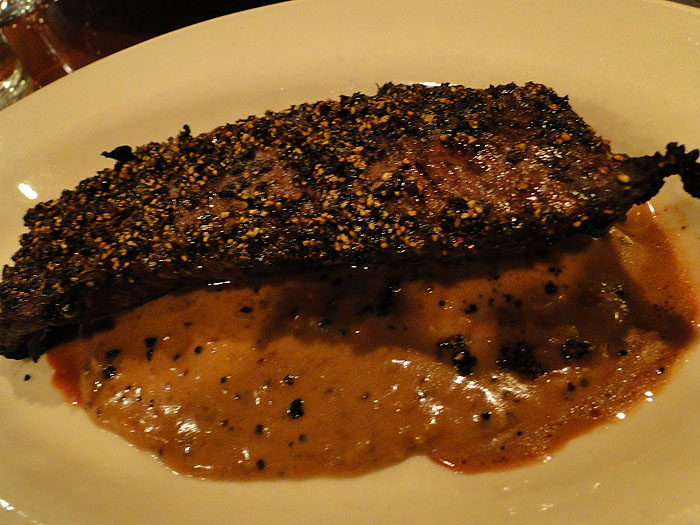I make ramen broth now and again because people frankly like it. It's not hard, but it does take organization beyond what is normally required of most recipes -- more than acquisition and mise en place. It's more like a progressive use of leftovers and "residues" -- the latter being parts of a meal that were not used, and sometimes discarded by those with dainty and wealthy mores. You have to plan to consume those "discards" too, so it really does take longer planning time.
We joke about "discards" because it makes us feel kind of superior. And in the long cooking time toward ramen broth, it gives us something to talk about while the smells emanate from the kitchen. No fancy technique or time-consuming manual tricks are needed to make this, but everything must be done in its right time and place. You can divide up the work over many days or weeks if you freeze or refrigerate the bits and components, and bring them out in enough time to satisfy the sequence of the overall recipe.
I've also deliberately developed other recipes and dishes from this progressive approach, so I don't feel like I'm putting all my efforts into one (albeit copious and time-consuming) recipe. The components all simmer in the broth at some point, but they also end up as ...
- Kakuni pork >> tara, topping
- Roasted chicken >> chicken stock, meaty chunks for topping
- Roasted pork bones >> fond, meaty chunks for topping
- Kombu >> Sichuan kombu salad
- Dried shiitake >> soy-braised mushrooms, topping
None of this was part of the original recipe I learned, but it does make sense to one who enjoyed the delusion of "something for nothing," you know?
 |
| kakuni pork (to make the tara): pork belly should be frozen to make it easier to cut into chunks. it's okay if it's frozen when it goes in, but cut them to the same size so they will cook evenly. |
 |
| it really helps to have one person cut and prep while the other attends to the parts that require heat and attention. bif is a great sous. |
 |
| ramen broth: roast pork bones till they are very dark and toasty. douse the bottom with water to loosen up the fond, which goes into the broth, too. |
 |
| steep the dried shiitake and dried kombu in hot water for a while, then simmer skim off any foam, since this will be concentrated down a bit. |
 |
| then add soy, sake, water. how much water? until the drop lid floats up. set the lid askew, so the liquid can boil off slowly, but still benefit from the slow braise/condensation. |
 |
| after three hours it will look done. put the damned lid back on and go away for another three hours! :) |
 |
while the pan is still hot, douse with water. then scrape up the fond, and add this liquid to the stock pot, too  |
 |
| did some experiments with singapore mei fun -- the leftover pork shreds was put in here at the end. some of the shiitake was sliced into here, too. |
 |
| we figured this salad out while eating our way through ramen alley and akasaka three-streets: bean sprouts, shichimi, sesame oil, salt, rice vinegar |
 |
| it's not ramen without sliced scallions! |
KAKUNI PORK BELLY
2 lbs pork belly, cut into 1-inch chunks
2 teaspoons vegetable oil
2 tablespoons sugar
the greens from a bunch of scallions or a couple of leeks, roughly chopped
thumb-sized piece of ginger, sliced
3 star anise
1/2 cup soy sauce
1/4 cup sake
2 cups water, approximately
Brown the meat in the oil on all sides -- don't crowd the pan and do it in batches if necessary. Some of the pork fat will render out. Remove the pork pieces and mix the sugar into the fat and cook with stirring till lightly caramelized. Toss the meat in the fat and sugar mixture to coat.
Add all ingredients -- add enough water to cover the meat and put a droplid over it if you have one. Cover the pot and bring the mixture to a boil, then reduce to a simmer. Leave the lid open a bit so the liquid can evaporate as it cooks. Simmer gently for 3-6 hours, till the liquid reduces by half. Add more water if it's evaporating too fast.
Drain out the solids and save the liquid separately to use in the ramen broth as tara.
Serve the meat over rice. It's very rich and you will likely only need one or two pieces per serving.
RAMEN BROTH GUIDE
chicken backs or thighs, and / or pork bones
olive oil
salt
pepper
Heat the oven to 450oF. Scatter the bones loosely on a baking pan, drizzle lightly with oil and season with salt and pepper. Place in the oven and roast till very dark, at least an hour.
When done, pour water to fill the bottom of the pan to loosen the fond. Leave for a few minutes before scraping.
2 cups dried shiitake
6-8 quarts water
2-3 x 6" pieces kombu
1 lb bacon
1 onion, cut into quarters
2 carrots, roughly chopped
Boil water. Add the shiitake and kombu pieces, place the lid on the pot tightly, and turn off the heat. Allow to steep for an hour. Then remove the pieces with a spider or a slotted spoon and allow to cool. Use the kombu for Sichuan Seaweed Salad, and the mushrooms for a braise.
Add the roasted bones and the scrapings from the bottom of the roasting pan with the water you used to loosen the fond. Simmer in the pot for an hour, then remove the bones; let them cool till you can handle them and pull the meat from the bones. Discard the bones; use the meat for another dish. (I usually dress the bland meat in a ponzu.)
Add bacon and simmer for another hour. Remove the bacon and reserve for another dish.
Add onions and carrots and simmer for another hour. Strain the broth. If you wish, boil it down to concentrate the flavors further or to save space on storage.
To serve, you will mix your tara (from the kakuni pork belly) and the broth. Season heavily with salt, if you'd like.
Cook your ramen noodles in a pot of hot water. Drain well and place in the bottom of a large bowl and ladle your tara-seasoned broth. Top with sliced pork belly or other meats, vegetable, nori, scallions, soft boiled egg halves, etc.
 |
| another night, another ramen bowl: scallions, mushrooms, pork, soft-boiled eggs, mung bean salad |



























































